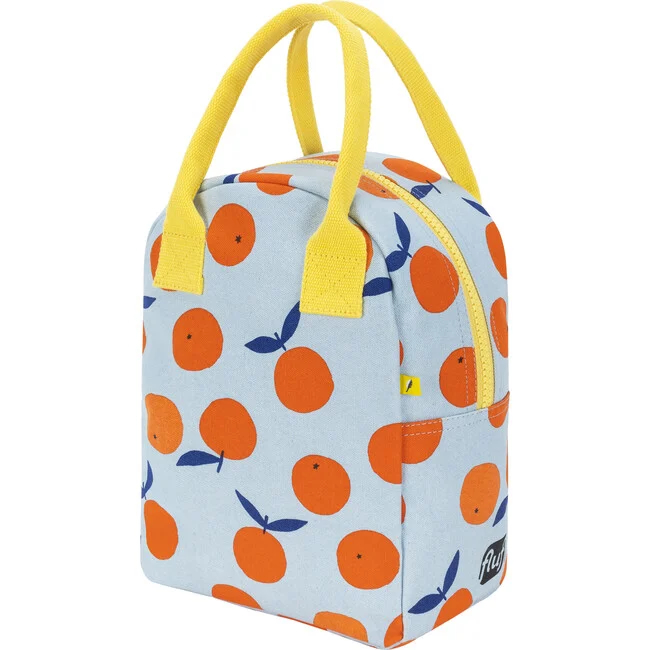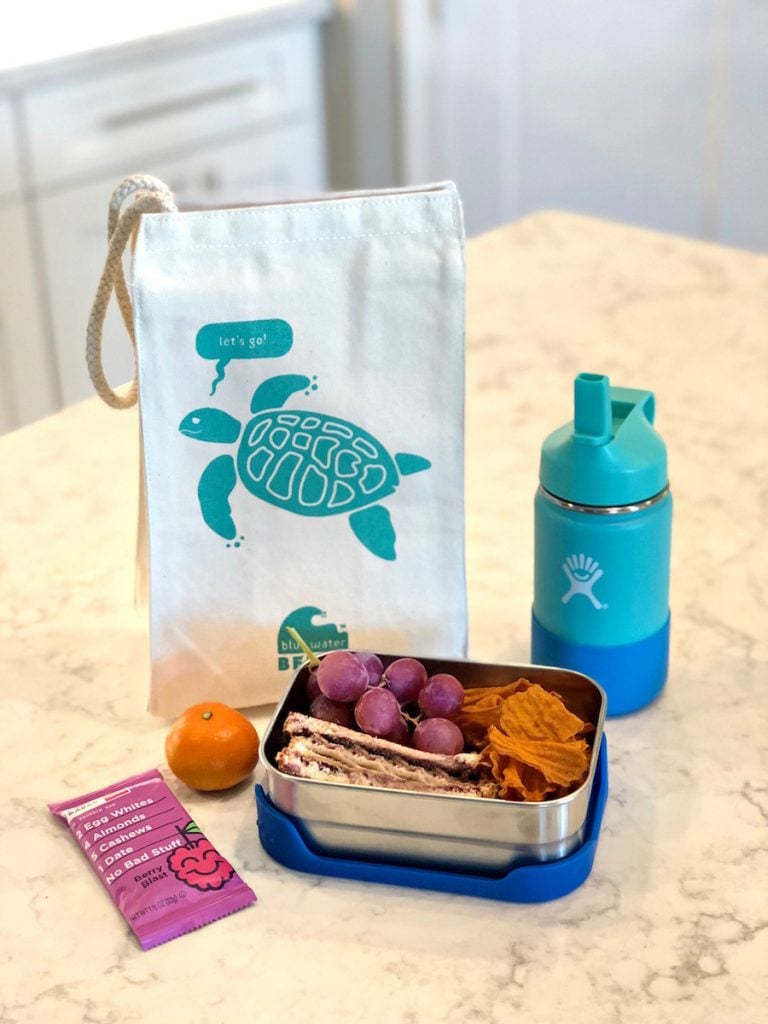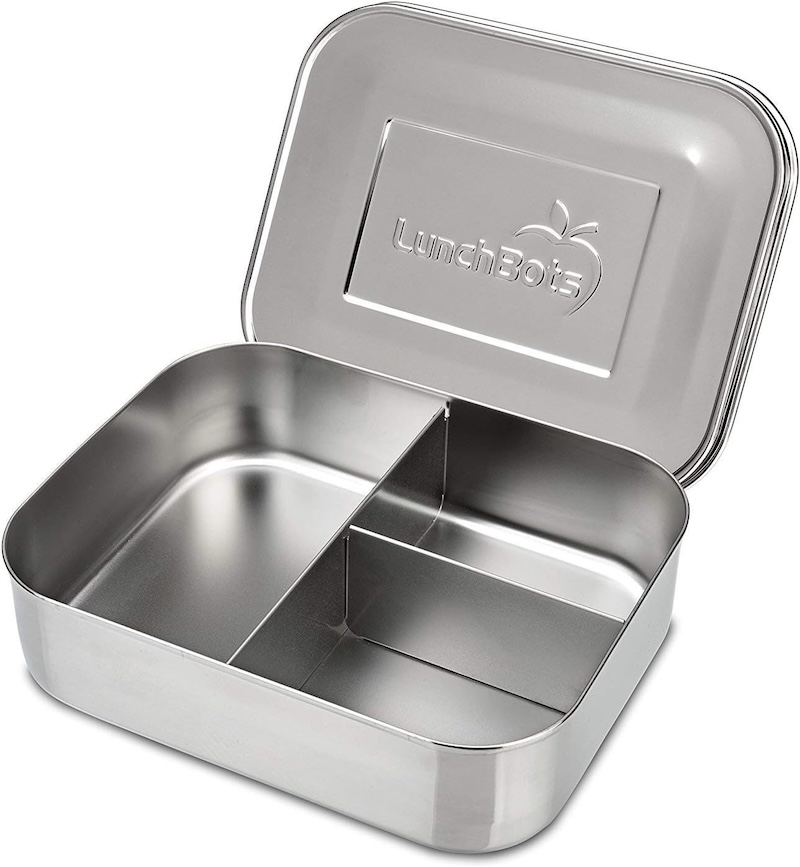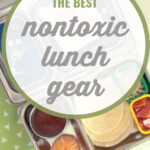Non Toxic Lunch Gear
Why go to the trouble of packing healthy, organic food in your child’s lunch if it’s going to sit in a lead-leaching lunchbox or endocrine-disrupting plastic all day? Find the best non toxic lunch boxes, bags, and containers for kids.
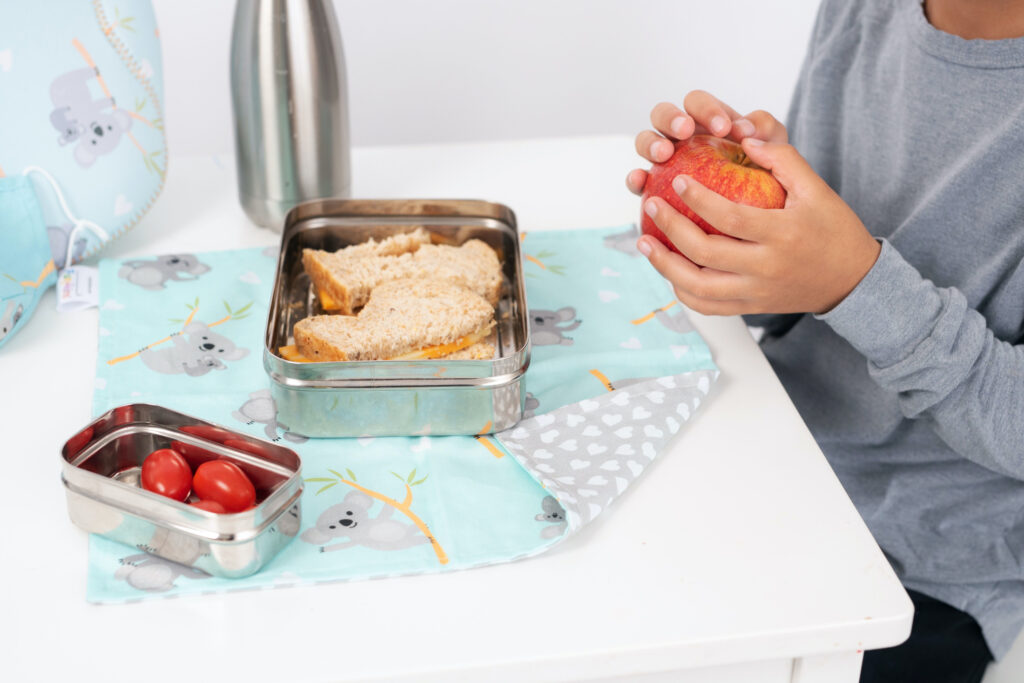
Children are more vulnerable than adults to the harmful effects of chemicals and toxins – especially when it comes to what they eat or hold next to their body.
As kids head back to school, it’s helpful for parents to know that what makes a lunch healthy is more than just the food.
It’s also how you pack it.
Harmful chemicals in lunchboxes, bags, and containers can leach into your child’s meals, potentially affecting their health.
By choosing non toxic lunch gear, you’re protecting your child from exposure to endocrine disruptors, heavy metals, and harmful plastics while also reducing waste and promoting sustainability.
Plastic Doesn’t Belong In Your Child’s Lunchbox
Plastic remains one of the most common materials used in lunch gear, but its risks far outweigh its convenience. Here’s why:
1. BPA and Other Endocrine Disruptors
Bisphenol-A (BPA) is a chemical often found in plastics labeled with a #7 recycling code. It mimics estrogen and can disrupt your child’s hormonal development. While many products now claim to be “BPA-free,” they often replace it with equally harmful alternatives like BPS.
Known as an endocrine disrupting chemical, BPA has been linked to reproductive and developmental issues including diabetes, early onset of puberty, and susceptibility to breast and prostate cancer.
2. Phthalates and Obesogens
Phthalates, chemicals used to soften plastics, are linked to obesity and metabolic disorders. Known as obesogens, these chemicals can interfere with hormone regulation, promote fat cell growth, and even affect appetite regulation. (source)
3. Heavy Metals in Insulated Gear
Some lunchboxes and insulated bags have been found to contain heavy metals like lead and cadmium in their linings. These metals can leach into food over time, especially with repeated use or damage.
4. Environmental Impact
Plastic contributes significantly to pollution. Even when recycled, it’s often down-cycled into less useful products. Ultimately, most plastics end up in landfills or oceans, where they persist indefinitely and harm wildlife.
The Benefits of Non Toxic Lunch Gear
There are many reasons for choosing to send your child to school with a lunch from home. For us, they rank in the following order of importance:
1. Healthier Meals
Non-toxic materials eliminate the risk of harmful chemicals leaching into food, ensuring your child’s meals are as safe as they are nutritious. Foods and snacks that come in plastic disposable containers (Lunchables, plastic squeeze yogurts, chips) typically aren’t the healthiest. Those quick fix snacks are usually high in sugar, sodium, and artificial colors and flavors.
2. Waste Reduction
Reusable containers and bags significantly cut down on waste. According to EarthShare, the average American child creates 67 pounds of lunch-related trash annually. Switching to reusable gear can dramatically reduce your family’s contribution to landfills.
3. Cost Savings
While the initial investment in non-toxic lunch gear may seem high, it pays off over time. Reusable items can save families up to $400 per child annually compared to single-use packaging.
The Green Child team has used reusable and washable lunch bags, cloth napkins, and placemats for 15+ years. Even though some of our kids have outgrown cute patterned cloth napkins in public, we still use them at home.
What to Look for in Non-Toxic Lunch Gear
When shopping for safe lunch gear, prioritize these materials:
- Stainless Steel: Durable, non-leaching, and lightweight, stainless steel is perfect for lunchboxes, food containers, and thermoses.
- Glass: Ideal for reheating food safely, glass containers with silicone sleeves can prevent breakage while remaining toxin-free.
- Silicone: Food-grade silicone is a safer alternative to plastic for reusable bags and lids.
- Cotton or Hemp: Perfect for washable lunch bags and napkins, natural fabrics are free from harmful dyes or coatings.
- Bamboo: Lightweight and biodegradable, bamboo utensils and plates are an excellent eco-friendly option.
The Best Non Toxic Lunch Boxes
Here are some of our favorite options for non toxic lunch boxes for toddlers, elementary aged kids, teens, and grown ups.
PlanetBox Stainless Steel Bento Box
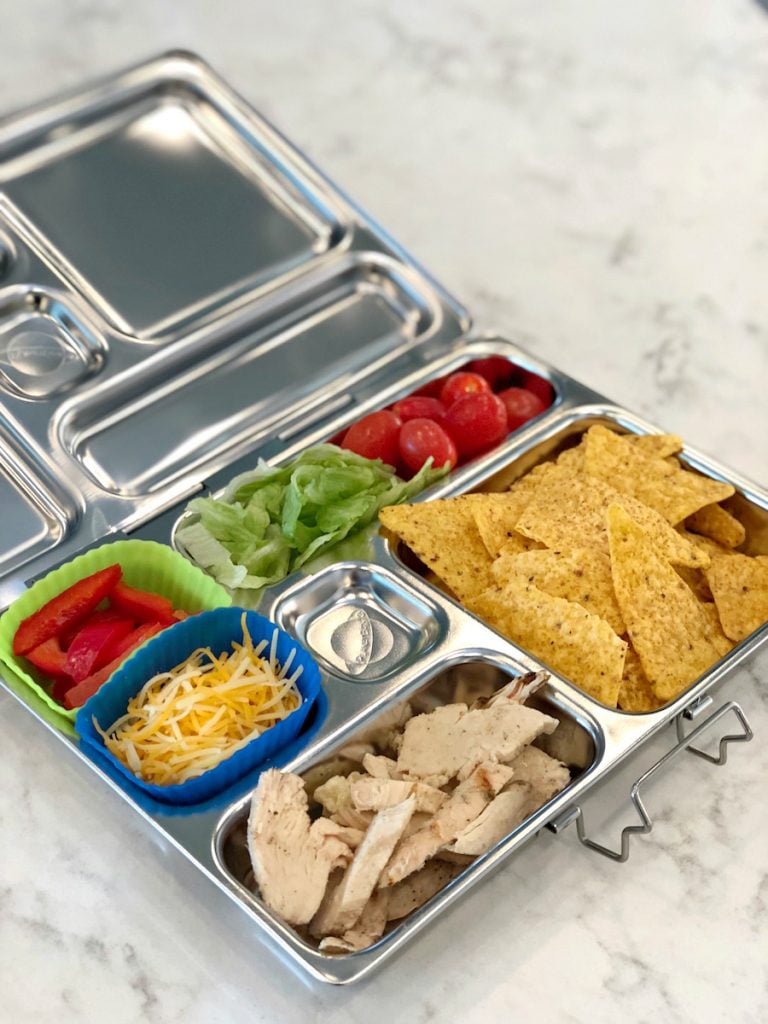
The Planetbox non toxic lunch box has a durable, divided container with compartments perfect for balanced meals. Find 21 ways to fill it with healthy school lunches.
Fluf Organic Cotton Lunch Bags
Fluf’s lunch bags are made with GOTS certified organic cotton and low-impact dyes for the outer fabric. The inner lining is eco-friendly GRS-certified (Global Recycle Standard) rPET, which meets the STANDARD 100 by OEKO-TEX® for safety. The lining is water-resistant without PFAS.
Fluf proves their standards by third party lab testing to be free from BPA, PVC, PFAS, phthalates, heavy metals, AZO, fire retardants, formaldehyde, and more.
ECOlunchbox Stainless Steel Bento Containers
ECOlunchbox is a great eco-friendly option for lunch gear, offering lunch bags, stainless steel bento boxes, food containers, camping plates, and sporks—all with a focus on being plastic-free.
Their lunch bags are made from GOTS-certified organic cotton with eco-friendly ink designs, and their containers use 100% food-grade stainless steel or food-safe silicone lids. Options come in various shapes, sizes, and leak-proof designs.
LunchBots Bento Boxes
Great to use for elementary-aged kids and as a non toxic lunch box for toddlers, these safe stainless steel containers come in various sizes.
SoYoung Linen Lunch Poche
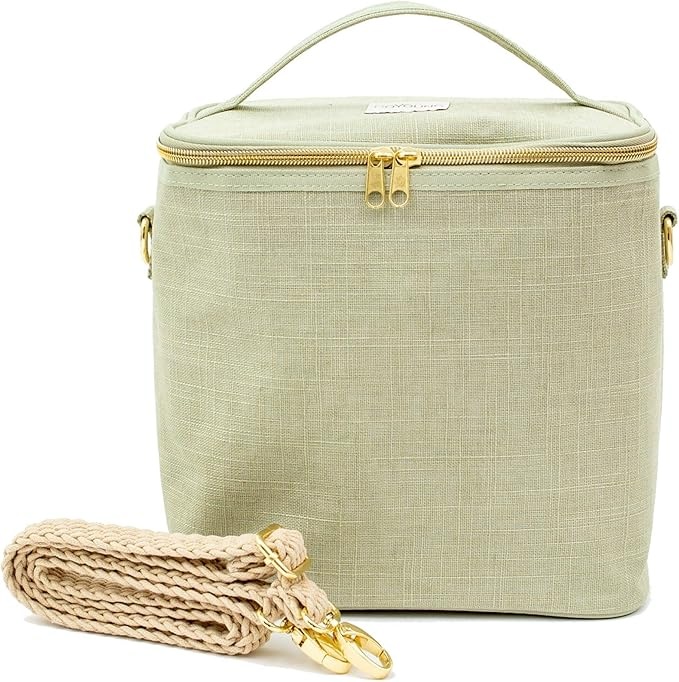
Stylish, insulated, and made with natural materials.
Reusable Bags & Wraps for Sandwiches
Instead of that hard plastic Wonderbread container (you know you’ve seen it in the bread aisle), a sandwich mat or beeswax wrap is a great non toxic lunch solution. It takes up way less space and can fit just about anywhere inside the lunchbox.
Stasher silicone bags – versatile, dishwasher-safe, and perfect for snacks or sandwiches.
Bee’s Wraps – made from organic cotton and beeswax to replace plastic sandwich bags.
Reusable snack bags are another way to keep lunch neat and simple. Carrots, celery sticks, grapes, pretzels… pretty much anything fits in these. There may be a zipper or a long strip of velcro to keep the bag closed. We rarely have crumbs in the bottom of the lunch box, so our kids must be sealing them well.
The best brands are free from lead and phthalates. Some are made from nylon and the patterned, wipe-off styles are made from 100% cotton laminated fabric. The laminate should also be non-toxic.
Reusable Water Bottles
Water is a healthy and simple drink option. Rather than sending a disposable bottle of water or juice box, opt for a sturdy stainless steel bottle you can use for school, sports, or any kind of travel.
If glass is allowed at your child’s school, we’ve had great luck with glass water bottles. Flat caps have been the best leak-proof option we’ve found, but some of the sports tops work well, too.
Utensils & Accessories
Another way to cut back on waste and cost is to send reusable accessories with your child’s lunch.
Bambu Bamboo Utensils – Lightweight and biodegradable utensils for every age.
Kids Konserve Stainless Steel Straws – A reusable alternative to plastic straws.
Funkins Cloth Napkins – Soft, washable napkins perfect for school lunches or picnics.
More on Healthy, Safe Lunches
Choosing non-toxic lunch gear ensures your child’s health and safety while reducing your family’s environmental impact. With so many safe and sustainable options available, it’s easier than ever to pack a healthy, eco-friendly lunch that aligns with your values.
21 Healthy School Lunch Ideas
Non Toxic Backpacks for Kids (by Age)
Back to School Routine Tips
Eco-Friendly School Fundraising Ideas

